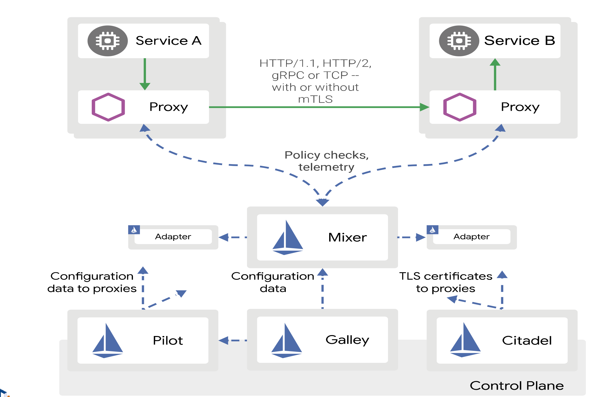How standard silicon chips could be used for quantum computing

To create and read qubits, which are the building blocks of those devices,
scientists first have to retain control over the smallest, quantum particles
that make up a material; but there are different ways to do that, with varying
degrees of complexity. IBM and Google, for example, have both opted for creating
superconducting qubits, which calls for an entirely new manufacturing process;
while Honeywell has developed a technology that individually traps atoms, to let
researchers measure the particles' states. These approaches require creating new
quantum processors in a lab, and are limited in scale. Intel, for example, has
created a 49-qubit superconducting quantum processor that is about three inches
square, which the company described as already "relatively large", and likely to
cause complications when it comes to producing the million-qubit chips that will
be required for real-world implementations at commercial scale. With this in
mind, Quantum Motion set off to find out whether a better solution could be
found in proven, existing technologies. "We need millions of qubits, and there
are very few technologies that will make millions of anything – but the silicon
transistor is the exception," John Morton, ... tells ZDNet.
Top 5 Attack Techniques May Be Easier to Detect Than You Think
The analysis shows attackers for the most part are continuing to rely on the
same techniques and tactics they have been using for years. And, despite all the
concern about sophisticated advanced persistent threat (APT) actors and related
threats, the most common threats that organizations encountered last year are
what some would classify as commodity malware. "Although the threat landscape
can be overwhelming, there are many opportunities we have as defenders to catch
threats in [our] networks," says Katie Nickels, director of intelligence at Red
Canary. "The challenge for defenders is to balance the 'tried and true'
detection opportunities that adversaries reuse with keeping an eye on new
techniques and threats." Red Canary's analysis shows attackers most commonly
abused command and script interpreters like PowerShell and Windows Command Shell
to execute commands, scripts, and binaries. ... Attackers most commonly took
advantage of PowerShell's interactive command-line interface and scripting
features to execute malicious commands, obfuscate malware, and malicious
activity to download additional payloads and spawn additional processes.
Preparing for enterprise-class containerisation

Beyond the challenges of taking a cloud-native approach to legacy IT
modernisation, containers also offer IT departments a way to rethink their
software development pipeline. More and more companies are adopting containers,
as well as Kubernetes, to manage their implementations, says Sergey Pronin,
product owner at open source database company Percona. “Containers work well in
the software development pipeline and make delivery easier,” he says. “After a
while, containerised applications move into production, Kubernetes takes care of
the management side and everyone is happy.” Thanks to Kubernetes, applications
can be programmatically scale up and down to handle peaks in usage by
dynamically handling processor, memory, network and storage requirements, he
adds. However, while the software engineering teams have done their bit by
setting up auto-scalers in Kubernetes to make applications more available and
resilient, Pronin warns that IT departments may find their cloud bills starting
to snowball. For example, an AWS Elastic Block Storage user will pay for 10TB of
provisioned EBS volumes even if only 1TB is really used. This can lead to
sky-high cloud costs.
Practical Applications of Complexity Theory in Software and Digital Products Development

The first radical idea has to do with the theory and practice of Complexity. The
second radical idea has to do with the human element in Complexity theory. Let’s
start with the first one. Most of the literature on Complexity and most of the
conversations revolving around Complexity are theoretical. This is true and has
been true in the last 17 years, also in the software development community, in
the products development community, and more in general in the broader Lean and
Agile community. When you look into real teams and organisations, here and there
you will find some individual who is passionate about Complexity, who knows the
theory, and who is using it to interpret, understand, and make sense of the
events happening around her/him and reacting in more effective ways. Complexity
gives her/him an edge. But such a presence of Complexity thinking is confined.
The first new radical idea is to shift up-side-down the centre of gravity of the
conversation around Complexity; to make the practical applications of Complexity
theory prominent.
Researchers show that quantum computers can reason

Admittedly, it’s not like you can run down to Best Buy today and purchase a
quantum computer. They are not yet ubiquitous. IBM apparently is collecting
quantum computers the way Jerry Seinfeld collects classic and rare cars. Big
Blue also is installing a quantum computer at Cleveland Clinic, the first
private-sector recipient of an IBM Quantum System One. But quantum computing’s
time in the sun inches inexorably closer. “Quantum computing (QC) proof of
concept (POC) projects abound in 2021 with commercialization already happening
in pilots and building to broader adoption before 2025,” REDDS Capital Chairman
and General Partner Stephen Ibaraki writes in Forbes. “In my daily engagements’
pro bono with global communities – CEOs, computing science/engineering
organizations, United Nations, investments, innovation hubs – I am finding
nearly 50% of businesses see applications for QC in five years, though most
don’t fully understand how this will come about.” IBM has not been the only
major tech company developing quantum computing technology.
Service Meshes: Why Istio? An Introduction

In any microservice-based architecture, whenever there is a service call from
one microservice to another. We are not able to infer or debug what is happening
inside the networked service calls. This might lead to serious problems when we
are not able to diagnose properly what is the problem if an unwanted situation
arises. For example; performance issues, security, load balancing problems,
tracing the service calls, or proper observability of the service calls. The
severity of the issue gets multiplied when you have to cater to many
microservices for any application to work properly. ... Istio has the most
features and flexibility of any of these three service meshes by far: Cascading
failure prevention (circuit breaking); Authentication and authorization.
The service mesh can authorize and authenticate requests made from both outside
and within the app, sending only validated requests to
instances; Resiliency features (retries, timeouts, deadlines,
etc.); Robust load balancing algorithms.
Control over request routing
(useful for things like CI/CD release patterns); The ability to introduce
and manage TLS termination between communication endpoints; Rich sets of
metrics to provide instrumentation at the service-to-service layer ...
Is Explainability In AI Always Necessary?

With increasing sophistication and completeness, the system becomes less
understandable. “As a model grows more realistic, it becomes more difficult to
understand,” said David Hauser at the recently concluded machine learning
developers conference. According to Hauser, clients want the model to be
understandable and realistic.This is another paradox a data scientist has to
live with. He also stressed that understandable solutions give up on accuracy.
For instance, network pruning one such technique which takes a hit on
accuracy. The moment non-linearities or interactions are introduced, the
answers become less intuitive. ... One of the vital purposes of explanations
is to improve ML engineers’ understanding of their models to refine and
improve performance. Since machine learning models are “dual-use”,
explanations or other tools could enable malicious users to increase
capabilities and performance of undesirable systems. There is no denying that
explanations allow model refinement. And, as we go forward, apart from the
debugging and auditing of the models, organisations are looking at data
privacy through the lens of explainability.
Leaker Dismisses MobiKwik's Not-So-Nimble Breach Denial

MobiKwik hasn't done itself any favors in its handling of this episode, noting
that when the allegedly stolen data came to light in February, it "undertook a
thorough investigation with the help of external security experts and did not
find any evidence of a breach." Subsequently, after they reviewed the leaker's
sample of stolen data, "some users have reported that their data is visible on
the dark web," it adds, but then it says other breaches must be to blame.
"While we are investigating this, it is entirely possible that any user could
have uploaded her/ his information on multiple platforms. Hence, it is
incorrect to suggest that the data available on the dark web has been accessed
from MobiKwik or any identified source," MobiKwik claims. But the company says
that despite having already brought in "external security experts" to
investigate, it's now bringing in more, "to conduct a forensic data security
audit." Hence, it's unclear what the first group of investigators might have
done. ... Reuters on Thursday, citing an anonymous source with knowledge of
the discussions, reported that the Reserve Bank of India was "not happy" with
MobiKwik's statements, and ordered it to immediately launch a full digital
forensic investigation.
New Storage Trends Promise to Help Enterprises Handle a Data Avalanche

Data virtualization has been around for some time, but with increasing data
usage, complexity, and redundancy, the approach is gaining increasing traction.
On the downside, data virtualization can be a performance drag if the
abstractions, or data mappings, are too complex, requiring extra processing,
Linthicum noted. There's also a longer learning curve for developers, often
requiring more training. ... While not exactly a cutting-edge technology,
hyper-converged storage is also being adopted by a growing number of
organizations. The technology typically arrives as a component within a
hyper-converged infrastructure in which storage is combined with computing and
networking in a single system, explained Yan Huang, an assistant professor of
business technologies at Carnegie Mellon University's Tepper School of Business.
Huang noted that hyper-converged storage streamlines and simplifies data
storage, as well as the processing of the stored data. "It also allows
independently scaling computing and storage capacity in a disaggregated way,"
she said.
The importance of tech, training and education in data classification

We have seen how automation plays a key role in establishing a firm foundation
for an organisation’s security culture, but given employees play such a vital
role in ensuring that business maintains a strong data privacy posture, the
ability to work with stakeholders and users to understand data protection
requirements and policies is key. Security and data protection education must be
conducted company-wide and must exist at a level that is workable and
sustainable. Regular security awareness training and a company-wide inclusive
security culture within the business will ensure that data security becomes a
part of everyday working practice, embedded into all actions and the very heart
of the business. A robust data protection protocol is critical for all
organisations, and will particularly be the case as we move beyond Covid-19 into
the new normal. Delivering optimal operational efficiencies, data management and
data classification provision under post-pandemic budget constraints will be an
ongoing business-critical challenge. To do nothing, however, will set up an
organisation to fail, and we have already seen large fines incurred for those
that have not given data security enough of a priority.
Quote for the day:
"Leadership cannot just go along to get
along. Leadership must meet the moral challenge of the day." --
Jesse Jackson
No comments:
Post a Comment